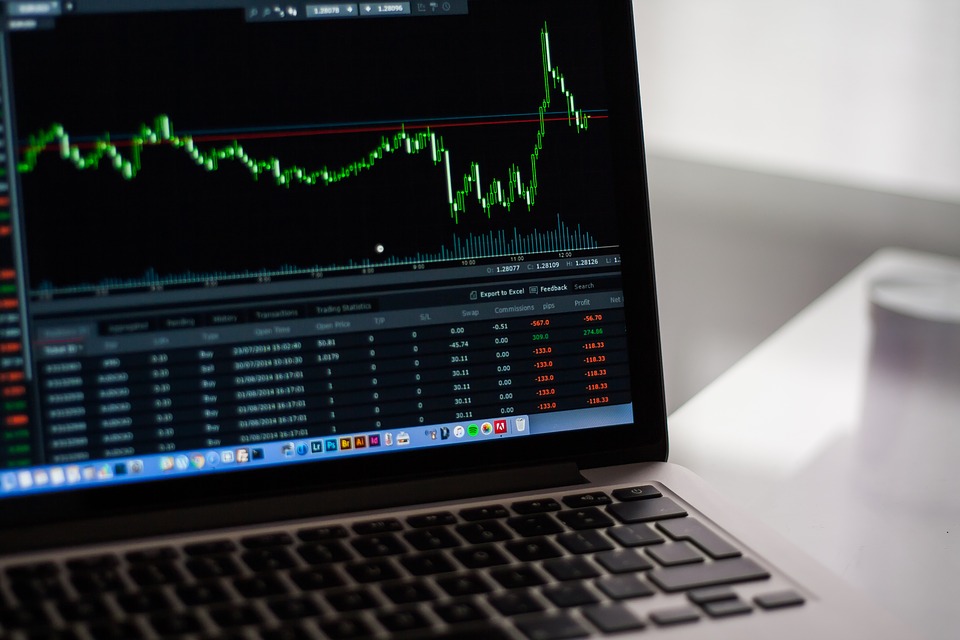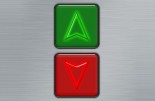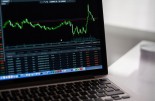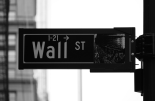Natixis IM: Market Update by David Lafferty

David Lafferty, Chief Market Strategist at Natixis Investment Managers, presents his vision on several asset classes.
Yields & High Quality Fixed
Even after the recent back-up in rates, US Treasury yields look unsustainably low with the UST-10 and UST-30 at 0.96% and 1.53%, respectively.
- For context, US 10-year breakeven inflation rate is 0.92%, meaning the real yield (TIPs) is effectively 0% (+0.04%). Against CPI of 2.3%, the UST-10 has a negative real yield of -1.3%.
- In spite of the coming deflationary effects from lower oil prices, the 0.9% breakeven rate looks way too low. In other words, inflation risk is underpriced.
- Since the Fed’s interest rate suppression began (arguably 2000 in the Tech Bubble), the nominal UST-10 has averaged 60 bps below nominal US GDP (real GDP + inflation). Using that premium, the UST-10 at 0.9% is pricing in nominal US GDP growth of +1.5%.
- In other words, in the next few years, the UST-10 is telling you that US real GDP plus inflation = 1.5%. That seems unlikely if there is any material rebound post-coronavirus in 2H:2020 and/or 2021 – which we obviously expect.
- If you think there is no end in sight to the current difficulties, US Treasury yields are about right. If not, US yields are probably too low.
At current yields, the forecasted return for high quality bonds doesn’t look good. UST-10 at 0.9% with a 9.7 year duration? UST-30 a 1.5% with a 25 year duration? At these durations, any upward movement in yields will wipe out your income accrual.
- In the short run, yields could rally again in a risk-off move. Good luck timing that. However…
- …in the long run, we know what high quality fixed will deliver:
- Best case scenario: Decent but not great returns if rates fall from here. Unlikely but possible. (Don’t forget the downside = Stocks will be hit severely if bonds are pricing recession forever.)
- Optimistic scenario: Very low returns (yield only) if rates remain stable around current levels. Possible, but not probable.
- Base case scenario: Negative returns if rates rise at all over the longer run.
- All of this argues for being somewhat cautious on duration =>
Credit
The coronavirus response – with major swaths of the global economy in lockdown, combined with the Russian/Saudi oil price war is creating a significant near-term double whammy to both aggregate supply & aggregate demand.
- The US is on the cusp of a recession. Economists/strategists are forecasting a 45% chance of a US recession in the latest Bloomberg survey.
- In my mind, recession may not be a foregone conclusion, but at this point, it’s starting to look probable. (The US could just avoid a technical recession with one of the coming quarters at 0% or just above that).
- The result is that the credit cycle may be ending.
All is not lost. Credit spreads have widening dramatically, particularly in high yield, and also in energy. This means that spreads are beginning to price in the downturn.
- The hit to credit from both the virus and the Saudi/Russia price war will take some credits out. Defaults are going up. It’s going to get ugly.
- However, spreads have already widened and some credits that have gotten significantly cheaper will come through the other side in good shape – or at least still in business.
- The key will be to separate those credits that are structurally doomed (i.e., going to default) and deserve to be trading at much wider spreads vs. those firms that are only temporarily credit/liquidity impaired, and therefore represent good value at these wider spread levels.
- This is the perfect environment for credit selection & bond picking. Lots of uncertainty, lots of price & spread dislocation. In summary, if you dump credit, you are foregoing some great opportunities. If you load up on credit, you’re exposing yourself to the broad downturn. What advisors need right now are strategies that help them navigate credit.
Combining the ideas above, the rally in bond yields and the sell-off in credit has made the bond market a very difficult place. There is clearly more interest rate risk and arguably much more credit risk vs. the pre-coronavirus days.
- The days of sitting around in US Aggregate Bond Index/ETF and watching yields fall and spreads tighten are over. The US Agg now yields 1.8% - less than current inflation! - at a 6 year duration. No thank you.
- In this new fixed income world, managers will have to be opportunistic, careful, and creative if they want to simultaneously navigate illiquidity, generate a decent yield, access riskier credits, and minimize duration/interest rate risk. Buying & holding the AGG does none of this.
- This screams for the broadest set of fixed income tools across credit, curve, and currency.
Equities
So first, on the earnings front – The bottom-up earnings growth estimate for the S&P 500 (SPX) pre-coronavirus was +6.7%, up to $174.86/share. (Source: Bloomberg, next 4 quarters). Today, that number has fallen only slightly, to $170.82 or +4.3%. In simply turns, the earnings growth estimate for the next 4 quarters has only fallen by 2.3%. This seems extremely optimistic, again, given that large swaths of the global economy will be shut down for 2-3 months.
- As the damage builds, investors should expect earnings estimates to come down sharply. So far, that isn’t happening because 1) much of the damage occurred after companies already reported, and 2) many of the companies didn’t take down their estimates instead preferring to only say that they “had no earnings visibility” due to the virus.
- The peak to trough earnings drop of the last 4 recessions has averaged 32%. (’82 = -18%, ’91 = -39%, ’01 = -24%, and ’08 = -49%). The range of scenarios from “just avoiding recession” to “typical recession” could conservatively take SPX earnings growth down to anywhere from 0% to -15%. Given the temporary nature of the outbreak, I have excluded the “deep recession” scenario. Again, seems unlikely, but not impossible. To be sure, knowing what we know now – which is effectively nothing - the range for possible earnings is very wide.
The valuation front is even less certain
- Using the recent past and typical discounting models (e.g., the Fed Model, etc.), the current interest rate environment theoretically justifies infinitely high P/Es. But back in the real world, these relatively low yields could justify nearly 20x P/Es again. (On a forward basis, the SPX P/E topped around 19.5x).
- Conversely, looking at P/Es during major modern slowdowns & recessions (post 1990), multiples can contract to 12x - 13x. The logic here is that regardless of how low rates go (or stay), nobody wants to pay a high ‘teens multiple for a flat-to-shrinking earnings stream on the cusp of recession.
- Where are we today? 15.7x on the SPX. That compares to a 30-year average 16.2x. However, if we adjust to exclude what we now know to be the ridiculous valuation of the tech bubble, the longer term average is about 15x.
- Long story short, we’re in the neighborhood of “average” at current valuations. If you believe in the “low rates” story, the market is cheap relative to that high ‘teens multiple. If you’re in the recession camp, the market is expensive relative to a low ‘teens multiple. This is why we primarily care about valuation when it is at extremes, which is no longer the case today.
- In summary, the wide range of possible earnings paths X wide range of justifiable valuation metrics doesn’t offer much help.
The SPX bear market (ATH on 2/19), which is now down -20% from the peak, has already seen three rallies of 6%, 5%, and 9% - in the last 2 weeks! Friday alone had 16 swings of +/- 1%, culminating in a 7% rally in the last 45 minutes of trading. All of this defies rational analysis. The market moves are virtually all multiple expansion/contraction. We know the fundamentals are deteriorating, but the forward estimates are not coming down much, so that means these wilds swings are all technical or sentiment driven. Good luck timing or tactically trading this market.
For equities, instead of guessing macro, investors should be focusing on micro => security selection. Which babies are getting thrown out with the bath water?
- Active management requires dispersion – You can’t beat the index if returns are tightly clustered. On that score, the cross-sectional volatility (i.e., dispersion) of the S&P 500 is 13% MTD for March. The number typically averages around 6-7%/month, so dispersion, or the opportunity set of active equity managers has roughly doubled! (Caveat – There’s no magic to dispersion. You still have to pick the right stocks, but when you do, the fuel for alpha has gone up 2x).
- The world has gotten cheaper, and some stuff is REALLY cheap. Some random stats …
- The STOXX Europe 600 trades at 11.1x forward earnings, a 28% discount to the SPX at a now-reasonably-cheap 15.4x. The STOXX has a dividend yield of 4.7% while the SPX is at 2.2%.
- Within STOXX, Auto & Autoparts are trading at a 5.0x P/E while Banks are trading at 6.1x, both roughly 50% discount to the overall index, which is already cheap. The Auto & Autoparts sub-index has a dividend yield of 8.2% while the Bank sub-index has dividend yield of 8.8%.
- Yes, Europe has problems and the earnings growth rates are not impressive, but the dividend yields alone are paying you handsomely while riding out this ridiculous volatility.
- When the world doesn’t end, and central banks are still pinned at 0% (or lower), rates will rise (see above), the curve will steepen (as it already has started to) and banks and cyclical industries should jump.
Alternatives
- The big takeaways from the coronavirus/oil price war shocks are that volatility and dispersion are up, equity valuations are cheaper, central banks will stay close 0%, but rates out-the-curve are too low – at least in the longer run.
- Non-traditional or alternative sources of income should be in demand with US and Global Aggregate Bond indexes yielding 1.9% and 1.3%, respectively. That isn’t going to get it done for most retirees (vs. say, the standard 4% withdrawal rate) or pension/endowments that have 5% - 8% return/liability targets.
- Worried about low rates, long index durations, and uncertain credit markets?
- For Financial Advisers looking backward, recent losses should drive interest in hedging equity beta.
- However, looking forward, at these valuations, I’m less interested in hedging equity exposure. Higher implied volatility (VIX) as the market sorts out the virus impact should help both.
- Lastly, I think we’re nearing the end of the omnipotent central banks. [Sunday Night: Market cratering after 100 bps emergency cut]. No longer can they save us and magically turn bad economic news into strong equity returns simply by cutting rates and buying assets (QE). It may not be over, but it’s getting closer. When/if that happens, the countercyclical equity impulse of the central banks should fade. In other words, the up/down effect that central banks have had on prices should fade. Trends should extend. That could be “bad to worse” (e.g., rising rates/bond losses) and/or “good to great” (e.g., setting up the next bull market for stocks).







